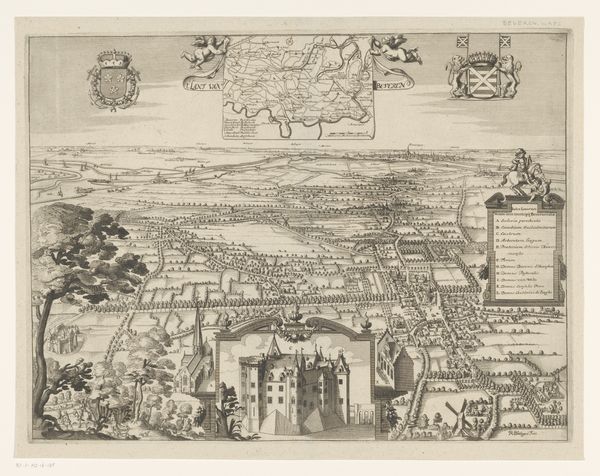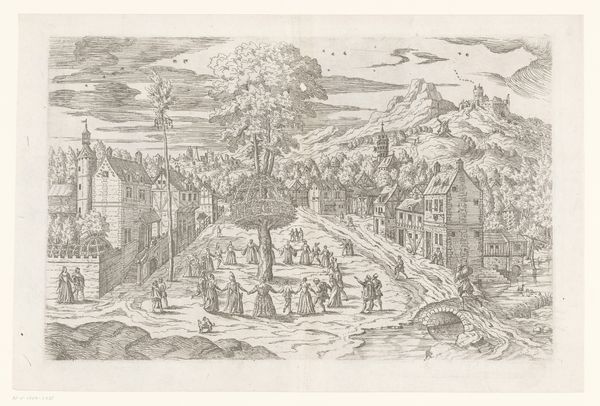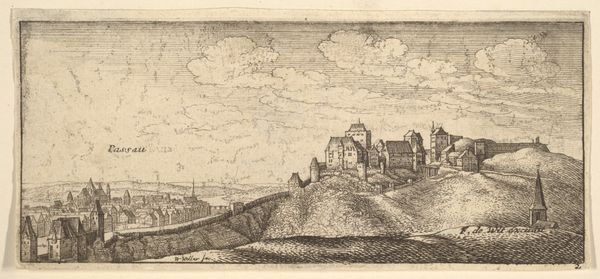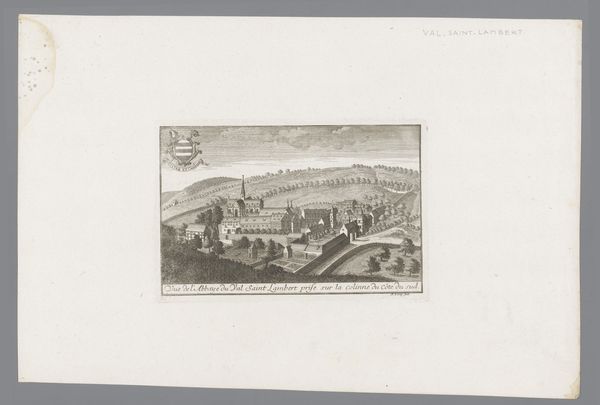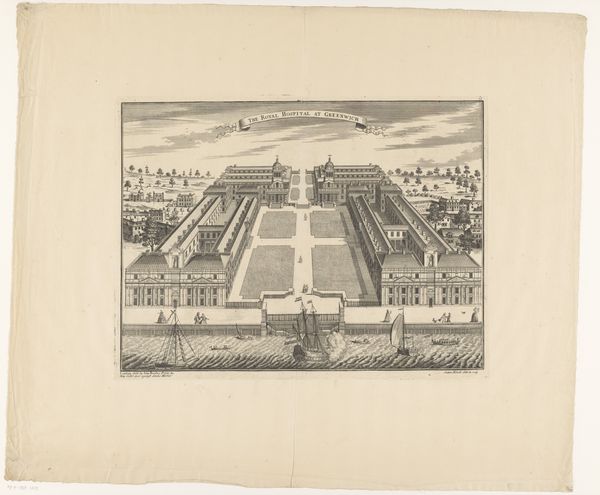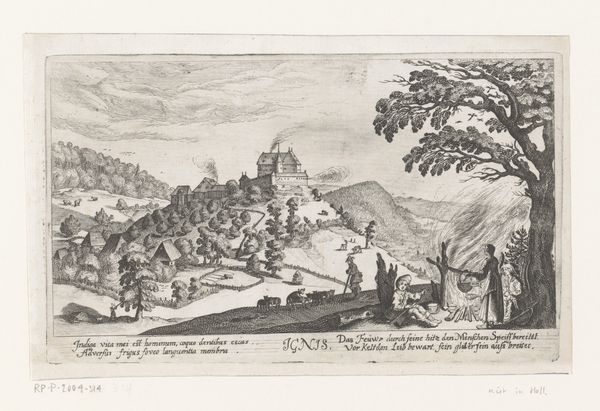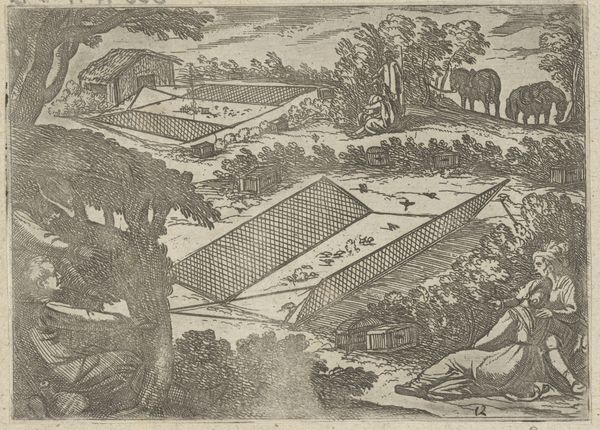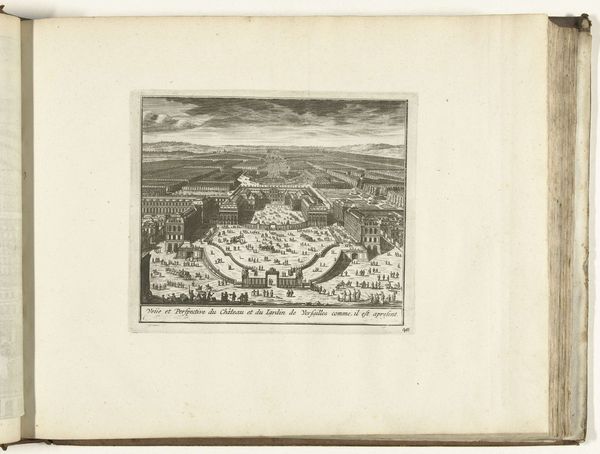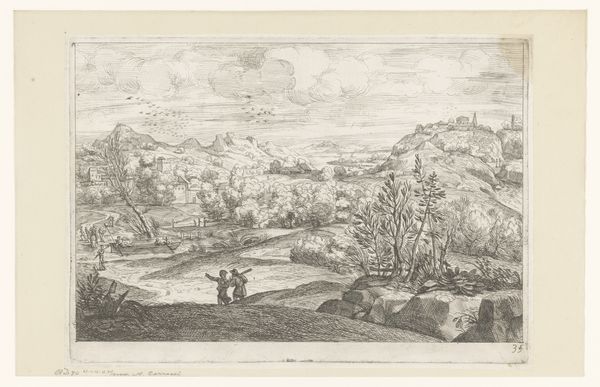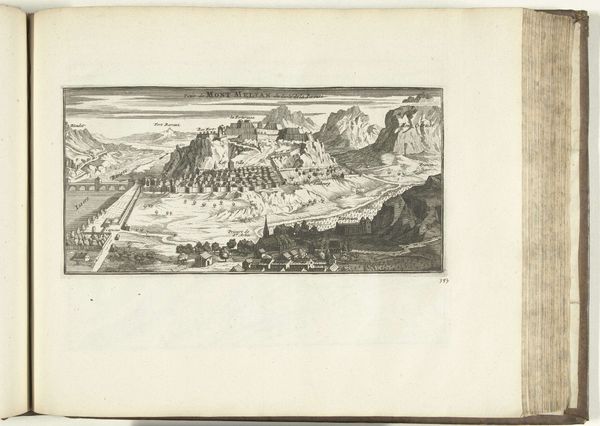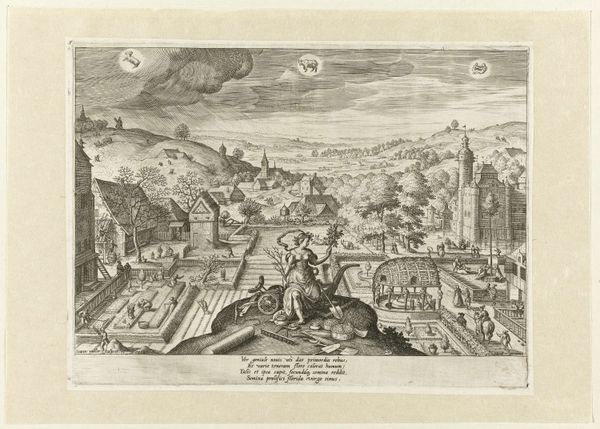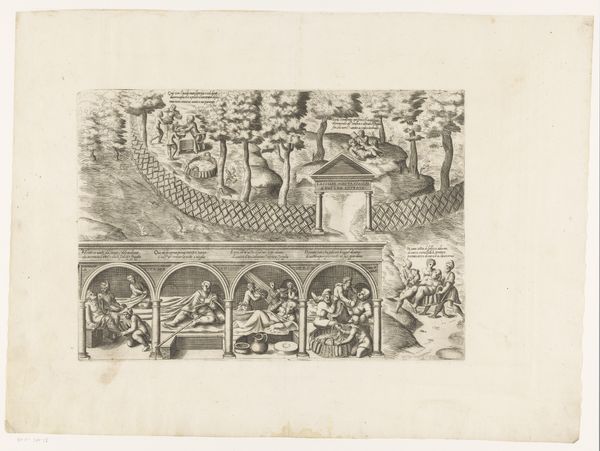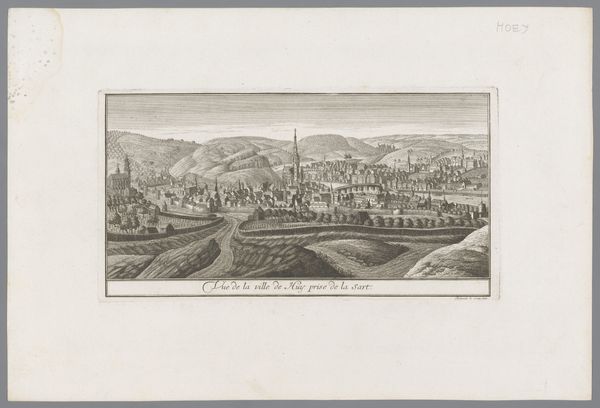
print, etching, engraving
#
baroque
# print
#
etching
#
landscape
#
history-painting
#
engraving
Dimensions: height 339 mm, width 502 mm
Copyright: Rijks Museum: Open Domain
Curator: This etching, "Gezicht op Heidelberg," was created by Wenceslaus Hollar sometime between 1695 and 1700. It's part of the Rijksmuseum's collection, a detailed depiction of Heidelberg and its famed gardens. Editor: My first impression is one of incredibly meticulous labor! The sheer density of lines to render this scene, it almost feels architectural in its precision. It reminds me of a very ornate technical drawing. Curator: Precisely! The social context here is crucial. Hollar, working in a period fascinated by scientific accuracy, would have approached this commission as a cartographer of culture, so to speak. His skill in etching, a printmaking process accessible to a wide audience, made images of power like Heidelberg accessible for broader consumption. Editor: So, it is like a propaganda piece of its time, making Heidelberg a sought-after cultural destination. The means of production influenced reception then, since a painting would be for the elite, but printed artwork spreads far and wide! Curator: Exactly. Look at the foreground. Hollar has depicted this massive landscape from the position of an imagined consumer of it, which makes the composition that much more active as an advertisement of sorts. It suggests that even the garden landscape is an act of labor and of human control over nature. Editor: I agree, I think this relates back to something core to Baroque landscaping - it is supposed to communicate an ability to marshal human will to rearrange the external world into a pre-mediated design. Even those meandering, viney fronds are intentional elements of this landscape as an art object. Curator: Considering its position in the Rijksmuseum today, how does that change the work's significance, now divorced from its propagandistic intent? It seems we keep trying to revive and contextualize this intent. Editor: It is a matter of preservation of not just an image, but of memory. That initial function makes "Gezicht op Heidelberg" not just a depiction of a place, but a vital record of evolving social and material ambitions that resonate across generations. Curator: I find myself rethinking how landscapes are produced and consumed, even today. The artwork has unveiled unexpected connections between aesthetics, authority, and accessibility. Editor: Yes, that the artwork shows so acutely this balance of elite power with widespread cultural diffusion allows the picture to persist as an historical statement.
Comments
No comments
Be the first to comment and join the conversation on the ultimate creative platform.
